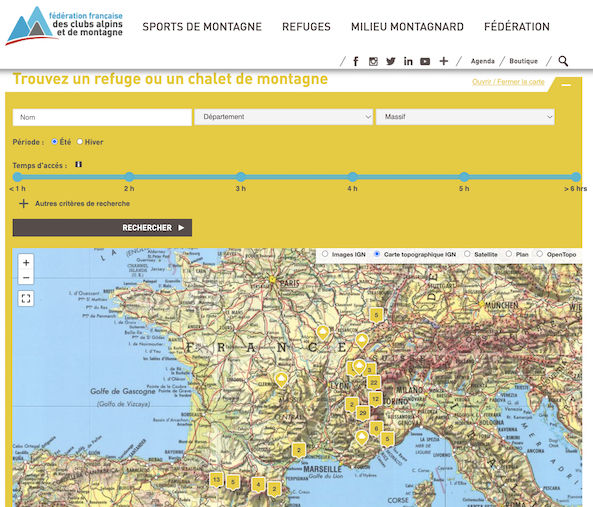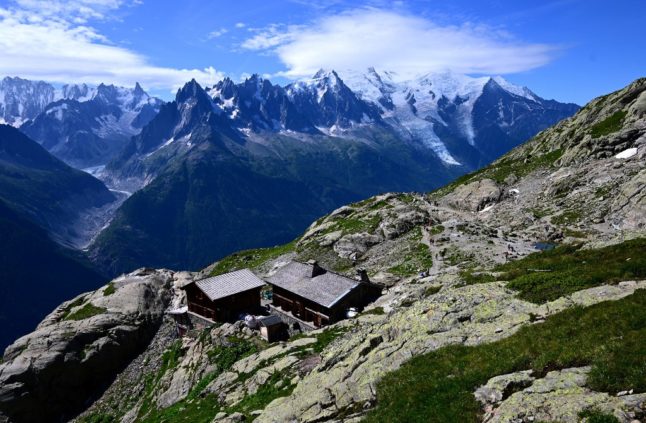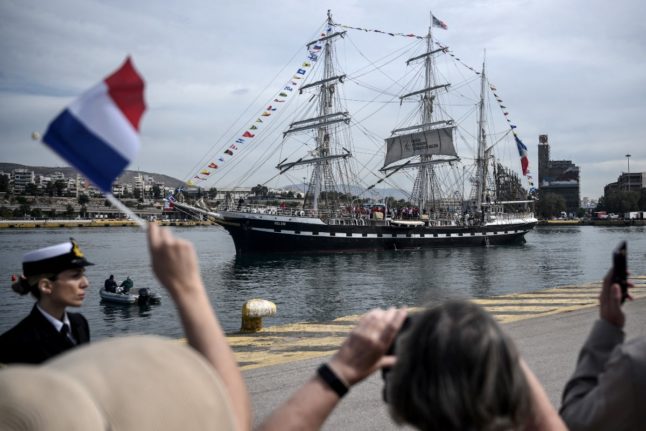Whether you were looking to hike without camping gear in the French Alps or spend a few days admiring the views in the Pyrenees mountains, staying in a refuge could make your trip even better than expected.
France has a large network of mountain refuges – ranging from the most basic which are simply a shelter in which to sleep to those that offer home-cooked dinners with wine.
They have been part of the history in France’s mountain ranges for decades, originally starting off as shelters for shepherds and eventually aiding mountaineers in ascending to great heights – like the summit of Mont Blanc.
In recent years, the climate crisis has left some at particular risk. In 2022, Le Figaro reported that a refuge in Isère was closed permanently after accelerated melting from the Pilatte glacier destabilised the bedrock on which the building stands.
On top of that, drought conditions across France have also placed some refuges in precarious positions, particularly those in remote areas where a consistent water supply is less readily available.
Nonetheless, hundreds are still available and make a trip to France’s mountains – whether the Alps, the Pyrenees or the Jura – really special.
Types of refuge
There are two types of refuges de montagne – gardé and non gardé.
A refuge non-gardé would offer bare minimum supplies, typically amounting to a simple space where hikers can spend the night. You would need to provide your own food, drink and bedding and they are unlikely to have electricity.
READ MORE: Five French hiking spots that are accessible from Paris
Frequently refuges non gardé – of which there are around 3,000 – are free, but some might ask that you leave payment in a box upon exit.
Refuges gardé, on the other hand, are staffed. Similar to hostels, they welcome groups of people into shared sleeping spaces. Most also offer home-cooked meals, which can be purchased in addition to the price for one night’s stay. Typically, you can choose to add on dinner, breakfast, and/or a packed lunch.
France counts at least 350 refuges gardé, mostly located in the Alps and Pyrenees. While some are privately owned and others are operated by France’s national parks, most are run by the FFCAM (the French Federation of Alpine and Mountain Clubs).
While refuges differ in the amenities they offer (ie charging outlets, showers, etc), they can be a great way to get stellar views of nearby mountain ranges, as well as a glimpse into local cuisine and culture.
How to choose and book a refuge
The first step is to determine what level of hike you are looking to do and where you want to go. Once you have done that, there are a few ways you can find a suitable refuge.
While you can search using other websites like Refuges.Info or by searching directly on the webpage of a specific French national park (eg. Parc National de la Vanoise), the easiest option is to log onto the FFCAM website.
The interactive map will allow you to specify the location of where you would like to hike based on département or mountain range. You can also choose the length of time required to access the refuge, as well as the elevation climb involved in the hike and search for refuges gardé or non gardé.

Select a refuge on the map and then click “Voir le site” (see the webpage). Each refuge will have its own dedicated page with information regarding price, amenities, and access to the site.
Some refuges have the yellow stamp ‘refuges en famille‘ which denotes that it is a family-friendly location that is accessible for children.
The dedicated page for an individual refuge will look something like this:

You can see a brief description of the refuge, as well as the contact information for the gardien (on the left hand corner). This page will show you the time(s) of year that the refuge is in operation.
The yellow square in the middle that says ‘Gardiennage’ will give you an indication of which amenities are available – in the above example things like electricity outlets, showers, toilets and running water are crossed out, while sheets, blankets and meals are not.
It is important to pay close attention to this part before booking, so that you are not surprised upon arrival and bring with you whatever you need, whether that is bedding, food or just toiletries.
Before booking, be sure to read through the Accès page in order to see the recommended hikes to reach the refuge. While you are not bound to any of these options, they are a great place to start when planning and anticipating the strenuousness of your journey up to the refuge.
How much can I expect to pay?
The tarifs page will give you an indication of the cost – you can expect to see prices between €20 to €35 per night per adult, but prices do vary.
The famous Goûter refuge on Mont Blanc, the refuge gardé at the highest elevation (3,335 m) in France, charges €65 per night, for example.
Meals are not included in the price per night, so you will have to add them on. You might expect to see le repas du soir (dinner) cost between €20 to €25. If you opt for a packed lunch and breakfast, those will likely be around €10 each.
You might see prices for a ‘demi-pension’ or a ‘pension’. This indicates the bundle cost for one night plus dinner and breakfast (demi pension) or one night plus dinner, breakfast and a packed lunch (pension).
Some things to note
There are many obvious advantages to staying in a refuge – affordability, beautiful views, the opportunity to travel light and make some new friends – but there are a few things to note before you book your stay.
1. Seasonality – Owing to the fact that most refuges are at higher altitude, the gardé (host-operated) refuges only open between June and September. Some refuges might become non-gardé outside of the summer period, however.
2. Lack of accommodation for special diets – As the gardien is typically cooking for a large group, it is not common to find exceptions available for people with special diets or food regimes.
3. Sharing a bedroom – Part of the refuge experience is sleeping in a dortoir collectif (dormatory). Don’t expect too much privacy and be sure to bring earplugs to lock out your neighbour’s snoring.
4. Amenities – As mentioned above, the amenities on offer vary widely. In many refuges, you can expect to forego a shower or the opportunity to charge your phone.
5. Accessibility – Very few refuges are accessible by car, so you should expect at least some light to moderate hiking to be involved in accessing the refuge. Keep in mind that some trailheads might be driving distance from the closest town or train station, so you will want to plan ahead to determine if you should either book a taxi, rent a car or use a public transport alternative (like navettes, or shuttle buses often operated in mountain ski areas during high tourism seasons).



 Please whitelist us to continue reading.
Please whitelist us to continue reading.
Member comments